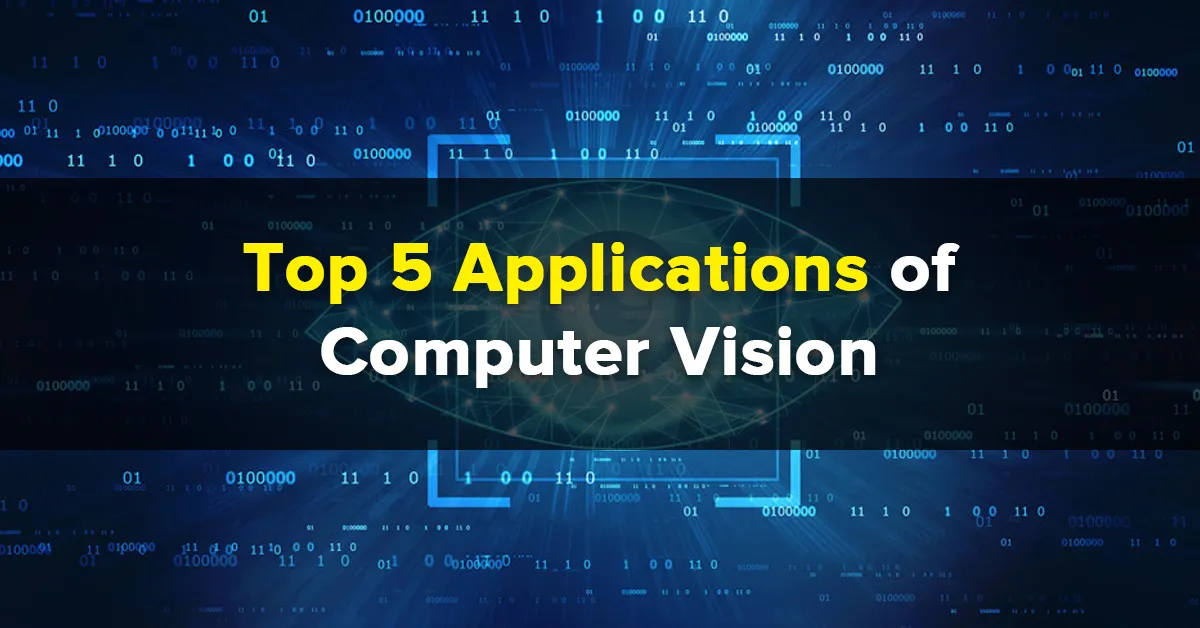Top 5 Applications of Computer Vision (CV)
Blog: Indium Software - Big Data
Imagine you are driving a car. You see a person move into the path of your car, making you take an appropriate action.
You would either apply brake and/or reduce the speed of the car. Thus, in a fraction of a second, the human vision has completed a complex task: of identifying the object, processing data, and making a timely decision.
That bit of detail helps understand the computer vision technology.
It is a field of computer science that enables computers to see, identify and process images in much the same way as the human vision before generating the necessary output.
The objective of computer vision is to enable computers to accomplish the same types of tasks as humans… with the same level of efficiency.
According to a report by Grand View Research, the global computer vision market size is forecast to grow at a compound annual growth rate of 7.6 percent between 2020 and 2027.
Advancements in artificial intelligence (AI), deep learning and neural networks have contributed to the growth of computer vision in recent years, so much so they are outdoing humans in tasks such as identifying and labelling objects.
The high volume of data being generated—an estimate is that 3.2 billion images are shared every day, to go with 720,000 hours of video—is another contributing factor which helps train and improve computer vision.
How computer vision works
Pattern recognition is the most important aspect of computer vision.
Therefore, one way to train machines to understand visual data is to feed labelled images and apply software methodologies or algorithms to help them identify patterns in those labelled or pre-identified images.
For example, if a computer is fed with tens of thousands of images of an object, it will use the algorithm to analyze the features and shapes to recognize the labelled profile of the object.
This is part of training a computer which, thereafter, will use its experience to identify unlabelled images of the object it was previously fed with.
Rates of accuracy for object identification and classification have increased from 50 percent to 99 percent in less than a decade, with modern systems proving more accurate than humans at detecting and responding to visual inputs.
Applications
Use cases of computer vision are not only limited to tech companies but the technology is integrated into key, everyday products for higher efficiency.
Self-driving cars
Computer vision helps self-driving cars understand their surroundings and thereby drive the passengers safely to their destination, avoiding potential collisions and accidents.
Cameras fitted around the car capture video from various angles and the data is fed into the computer vision software, which processes the input in real-time to understand the road condition, read traffic signals and identify objects and pedestrians en route.
The technology also enables self-driving vehicles to make critical on-road decisions such as giving way to ambulances and fire engines.
With millions killed in car accidents each year, safe transportation powered by computer vision is paramount.
Facial recognition
Computer vision algorithms identify facial features in images and correlate them with the database of face profiles.
The high volume of images available online for analysis has contributed to machines learning and identifying individuals from photos and videos.
Securing of smartphones is the most common example of computer vision in facial recognition.
Computer vision systems are adept at identifying distinguishing patterns in retinas and irises, while they also help improve the security of valuable assets and locations.
According to a NIST report, the leading facial recognition algorithm as of 2020 has an error rate of 0.08 percent, a remarkable improvement on the 4.1 percent error rate in 2014.
Medical diagnosis
Engineers at the University of Central Florida’s Computer Vision Research Center taught a computer to find specks of lung cancer in CT scans, which is often difficult to identify for radiologists.
According to the team, the AI system has an accuracy rate of about 95 percent, an improvement on the 65 percent by human eyes.
It essentially proves that computer vision is adept at identifying patterns that even the human visual system may miss.
Such applications help patients receive timely treatment for cancer.
Manufacturing
Computer vision helps enhance production lines and digitize processes and workers in the manufacturing industry.
On the production line, the key use cases are the inspection of parts and products for defects, flagging of events and discrepancies, and controlling processes and equipment.
Thus, the technology eliminates the need for human intervention on the production line.
Law
Computer vision enables the prevention of crimes by helping security officials scan live footage from a public place to detect objects such as guns or identify suspect behavioral patterns that may precede illegal and dangerous action by individuals.
The technology also aids authorities with the scanning of crowds of people to identify any wanted individuals.
What’s the future of computer vision?
Considering the modern capabilities of computer vision, it’s a surprise that applications and advantages of the technology remain unexplored.
In the future, computer vision technologies will be easier to train and they will also capture more information from images than they do now.
It is being said that computer vision will play a key role in the development of artificial general intelligence and artificial superintelligence by enabling them to process information on par with or better than the human visual system.
The post Top 5 Applications of Computer Vision (CV) appeared first on Indium Software.
